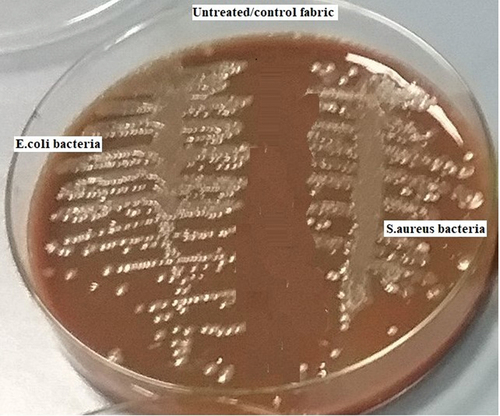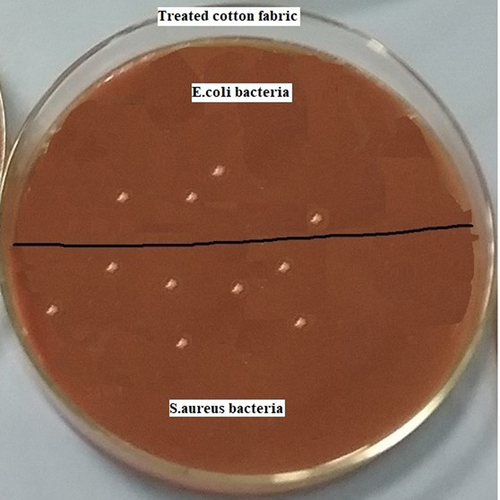Figures & data
Table 1. The amount of natural dye from nettle leaf at different extraction conditions.
Table 2. Analysis of Variance (ANOVA) for the amount of dye for different dye extraction variables.
Table 3. Colour strength values in different parameter combinations.
Table 4. Analysis of Variance (ANOVA) for K/S value.
Figure 1. FT-IR spectra of the extracted dye, dyed sample with sodium alginate mordant, and without mordant, respectively.
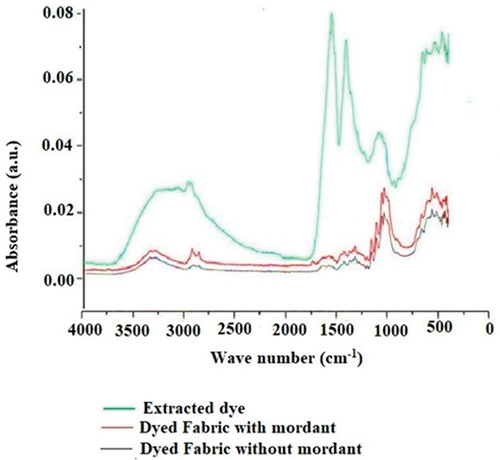
Table 5. Values of light, washing, and rubbing fastness of cotton fabrics dyed by the pre-mordanting method.
Table 6. Bacterial reduction test results for the treated fabric.
Figure 3. 3D response surface plots for the effects of extracted powder concentration, temperature, and pre-soak time on S. aureus after cotton fabric dyeing.
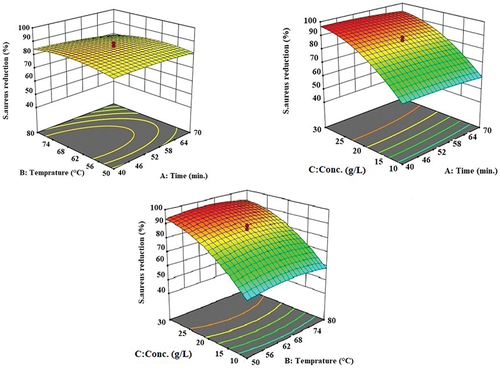
Figure 4. Response surface plots for the effects of extracted powder concentration, temperature, and presoak time on E. coli after cotton fabric dyeing.
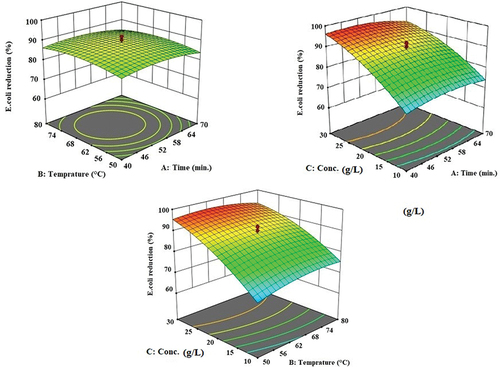
Figure 6. Bacterial growing conditions for both E. coli and S. aureus on the treated sample after one and five washes, respectively.

Figure 7. Bacterial growing conditions for both E. coli, and S. aureus on the treated sample after 10 and 15 washes, respectively.
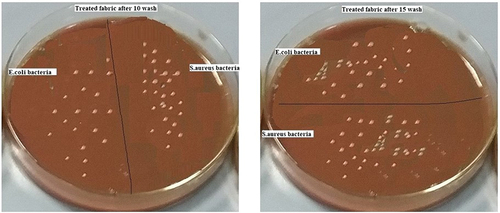
Table 7. Bacterial reduction (%) test results of wash durability for the treated fabrics.

